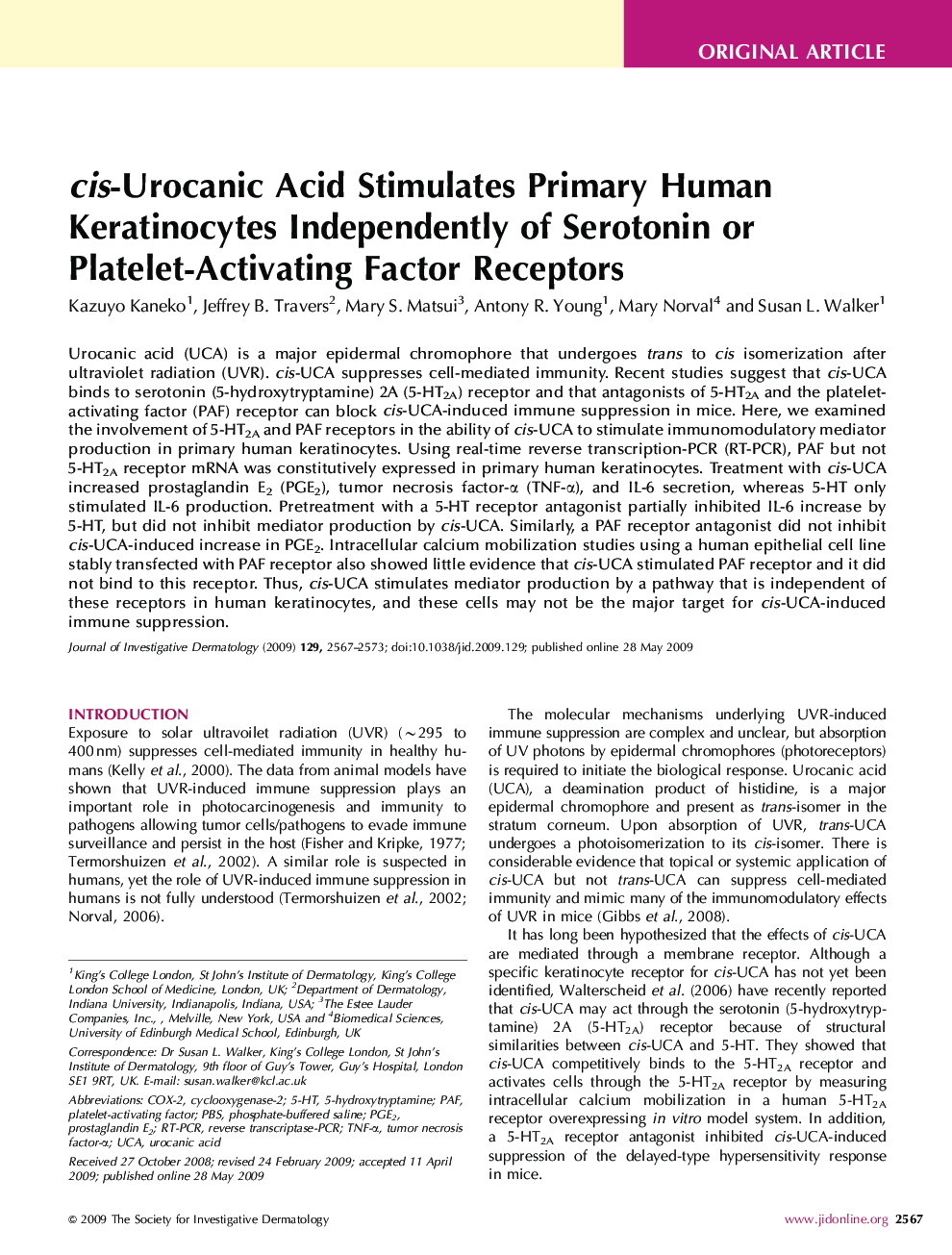| Article ID | Journal | Published Year | Pages | File Type |
|---|---|---|---|---|
| 3217453 | Journal of Investigative Dermatology | 2009 | 7 Pages |
Urocanic acid (UCA) is a major epidermal chromophore that undergoes trans to cis isomerization after ultraviolet radiation (UVR). cis-UCA suppresses cell-mediated immunity. Recent studies suggest that cis-UCA binds to serotonin (5-hydroxytryptamine) 2A (5-HT2A) receptor and that antagonists of 5-HT2A and the platelet-activating factor (PAF) receptor can block cis-UCA-induced immune suppression in mice. Here, we examined the involvement of 5-HT2A and PAF receptors in the ability of cis-UCA to stimulate immunomodulatory mediator production in primary human keratinocytes. Using real-time reverse transcription-PCR (RT-PCR), PAF but not 5-HT2A receptor mRNA was constitutively expressed in primary human keratinocytes. Treatment with cis-UCA increased prostaglandin E2 (PGE2), tumor necrosis factor-α (TNF-α), and IL-6 secretion, whereas 5-HT only stimulated IL-6 production. Pretreatment with a 5-HT receptor antagonist partially inhibited IL-6 increase by 5-HT, but did not inhibit mediator production by cis-UCA. Similarly, a PAF receptor antagonist did not inhibit cis-UCA-induced increase in PGE2. Intracellular calcium mobilization studies using a human epithelial cell line stably transfected with PAF receptor also showed little evidence that cis-UCA stimulated PAF receptor and it did not bind to this receptor. Thus, cis-UCA stimulates mediator production by a pathway that is independent of these receptors in human keratinocytes, and these cells may not be the major target for cis-UCA-induced immune suppression.
